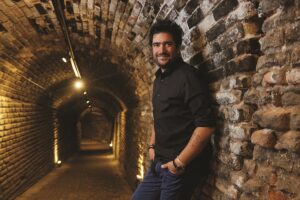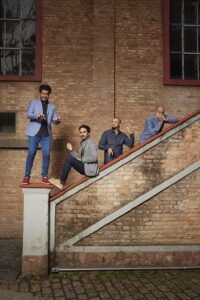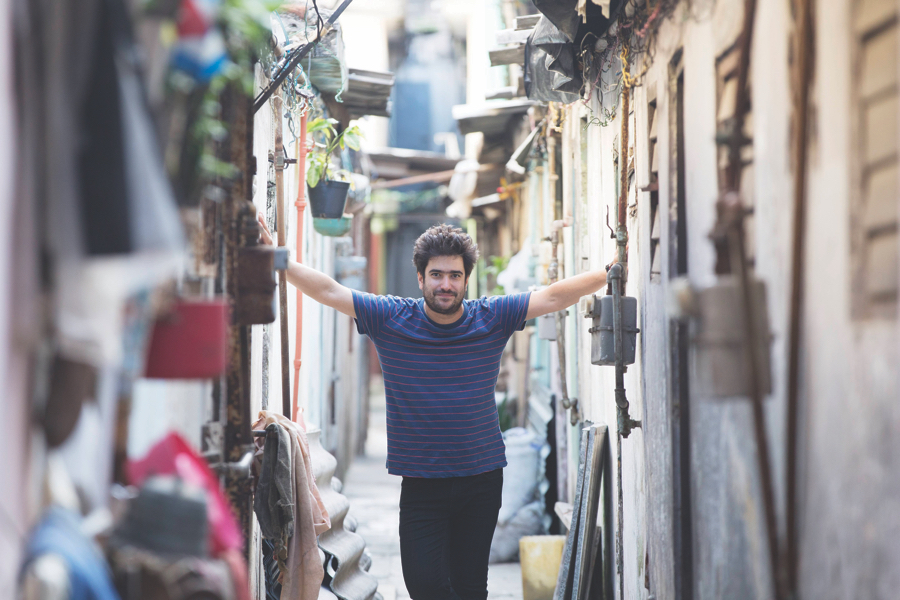The Cuban pianist Harold López-Nussa was born into music. His mother was a piano teacher and his father a professional drummer. His uncle and grandmother were both piano players.
While he was growing up in Central Havana, López-Nussa’s family gathered at his grandmother’s house every Sunday for musical reunions. “I remember my parents and my uncle playing jazz, classical music, and some French music as well,” he says. His grandmother was from France.

López-Nussa started playing the piano at eight. His younger brother, Ruy, also played. “Anything we learned during the week,” he says, “we played for our grandma on Sunday as a test.”
His mother and father encouraged them to play the piano because it often serves as a foundation for learning other instruments, López-Nussa says. “They said it’s important to know and blah blah blah,” he laughs.
López-Nussa says Ruy seemed less enchanted by the instrument — he switched to percussion as a teenager. But Harold kept at the piano. “I was falling in love little by little,” he says.
In 2005, while attending Havana’s Instituto Superior de Arte, López-Nussa entered the Montreux Solo Piano Competition in Switzerland and won.
“That changed my life,” he says. In addition to garnering international attention, he witnessed performances by a few of his “heroes,” including Chick Corea and Herbie Hancock. That spurred his decision to become a professional musician. Before graduating from university, he was already immersed in Havana’s professional jazz world, touring as a pianist with musicians including Buena Vista Social Club vocalist Omara Portuondo. In 2007, he released his first album, Canciones. Since then, he has toured internationally and released seven more albums.
His connection with the piano is physical. “It’s something that’s been with me my entire life,” says López-Nussa, now 40. “I don’t see myself living in a place where there is not a piano.”
The instrument “is like a companion of your life,” he says. “When you are alone, it’s very intimate. It’s just you and him. You can play him and talk to him a little bit. I’ve found that I can express with the piano things that are more difficult for me to say with words.”
His style mixes traditional Cuban jazz with the freedom that improvisational jazz offers. “I improvise — I try crazy things,” he says. “I make mistakes, and I try again.”

This friendship with his instrument manifests mainly when he’s home alone, López-Nussa says. When he has an audience, “everything changes.” Despite his vast experience with performance, he says he still gets nervous every time.
“You have the energy of them,” he says of the audience. “Every time, there is some feeling, some animal fear, some magic happening.”
Under the Payomet tent on Saturday, Aug 5, López-Nussa will share energies with an Outer Cape audience. With Grégoire Maret on harmonica, Luques Curtis on bass, and brother Ruy Adrián López-Nussa on percussion, he will perform a selection of tunes from his newest album, Timba a la Americana, recorded on the Blue Note label. On the album, Bárbaro “Machito” Crespo plays the congas.
Timba a la Americana, to be released on Aug. 25, is inspired by López-Nussa’s recent decision to move his family from Cuba to France. He moved partly for work reasons, he says, and he wants his two daughters to learn French because of the family’s heritage. The move also has to do with Cuba’s complicated political and economic situation.
“The music reflects the last year of my life,” López-Nussa says. “I love to play what I’m living. Sadness, happiness — whatever is happening with me.”
The album, with 10 new compositions, deals in both joy and melancholy. The feelings are split “50-50,” he says. “Maybe 60-40.” The songs transcend genre: he draws on Cuba’s popular, folkloric, and traditional sounds while expanding into his own realm of jazz improvisation.
The album “reminds me of Cuba,” he says. “There’s a feeling of homesickness. But at the same time, living new things is exciting.”
Earlier this year, López-Nussa released the first track of the album as a single called “Funky.” In a video on López-Nussa’s YouTube channel, the song begins with Grégoire Maret’s wandering harmonica introduction but quickly morphs into an intensely rhythmic, jazzy conversation between piano, harmonica, drums, and bass. López-Nussa’s playing seems effortless. His fingers dance on the keys in a careful balance of control and improvisatory liberty. The song is aptly titled: the room vibrates with the invisible energy of polyrhythms. It’s funky.
The emotional diversity of the album is evident in the song “Mal du Pays,” meaning “homesickness.” The tune starts with a bittersweet melody played on electric piano. Soon, the piano is joined by the wail of a harmonica. The two instruments, accompanied by the soft plucking of an upright bass, embody the sound of nostalgia. At the halfway point, the song transitions to a slow rumba. The electric piano is replaced by acoustic, melding modernity with tradition.
The last track on Timba a la Americana is titled “Hope.” A basic offbeat syncopation provides the forward-moving pulse. “Hope” is virtuosic in the piano line but accessible to those inclined to simply bop their heads to the beat.
“I love records,” López-Nussa says. “I love listening to music. But what I most love is playing live music.”
He plans to open his heart to the Payomet audience, leading them through his shifting musical and emotional landscape. Every live performance is different, he says, but one thing stays the same. “Most of the time, when I finish a concert, people say, ‘You look so happy. You look like you’re having a good time,’ ” he says. “Yes, indeed. I always have a good time playing music.”
Piano at Payomet
The event: Harold López-Nussa performs Timba a la Americana
The time: Saturday, Aug. 5, 7 p.m.
The place: Payomet Performing Arts Center, 29 Old Dewline Road, North Truro
The cost: $30 to $55 at tickets.payomet.org

